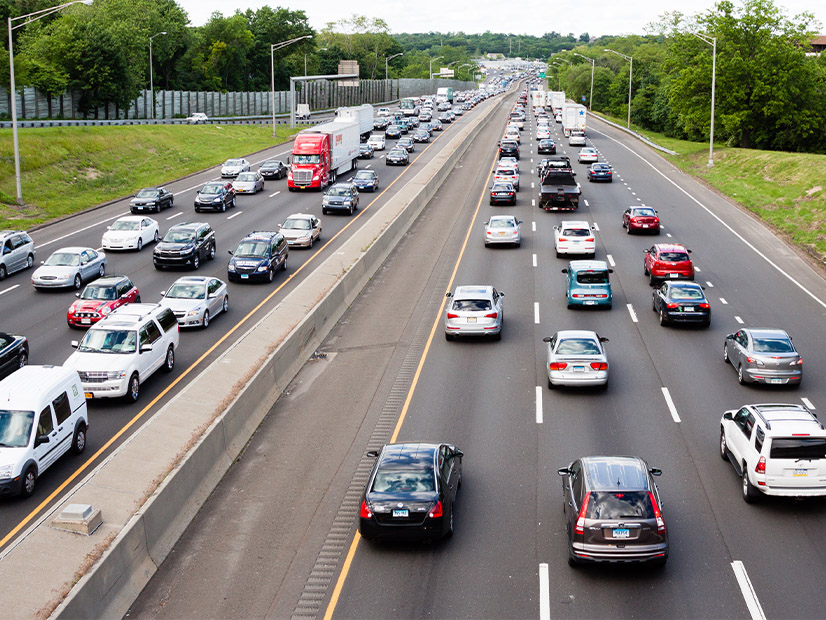
Climate advocates are seeking to update Connecticut’s 14-year-old climate law to bring the state closer to meeting its statutory greenhouse gas emission reduction targets.
“We’re not on track to meet our GHG reduction mandates and that means … we’re going to need to be playing some pretty serious catch-up in the coming years with some very bold climate action,” Leah Lopez Schmalz, vice president of programs at Save the Sound, said Tuesday.
Connecticut’s GHG emissions inventory, released in September, showed that the state’s emissions are increasing, which means “limited action” on climate issues “is going to get compounded,” Schmalz said during a Connecticut League of Conservation Voters Education Fund Environmental Summit.
The 2008 Global Warming Solutions Act set a mandatory 10% reduction in GHG emissions below 1990 levels by 2020, but the inventory showed the state emitted 2.9% more GHGs in 2018 than required for 2020.
“That 2020 goal of 10% reduction was seen at the time as a really modest goal; one that wasn’t going to be too hard to achieve,” Schmalz said. “But here we sit in 2022, having passed 2020, looking at data from 2018, and seeing that what we’ve done is insufficient.”
The law also sets targets of 45% and 80% reductions below 2001 levels by 2030 and 2050, respectively.
Certain “upgrades” to provisions in GWSA will help Connecticut follow the lead of neighboring Northeast states and make the “significant cuts” necessary to reach its targets, Schmalz said
Those upgrades include:
- setting mandates for net-zero emissions by 2050 and 100% zero-carbon electricity by 2040;
- enabling citizens to bring a suit against the state if mandates are not met; and
- establishing regulatory authority for agencies to adopt regulations to address climate change.
In addition, Schmalz said, the law should set shorter intervals for the emissions reduction targets.
“We have 10-year and 20-year targets, which means by the time you get to that 10 years, if you’ve missed some progress along the way, you have a lot of catching up at the very end of your requirements,” she said.
Setting a five-year interval, she added, would allow the state to “adapt in real time to real data.”
Transportation Policy
The state GHG inventory highlighted continuous increases in the transportation sector since 1990, largely because residents are “driving more,” Department of Energy and Environmental Protection (DEEP) Commissioner Katie Dykes said on Thursday during the second day of the summit.
Adopting California standards was among the recommendations in the report for the sector.
“I hope this year we’ll be able to get adoption of legislation that will finally allow DEEP to join our neighboring states in adopting California’s emission standards for medium- and heavy-duty vehicles,” Dykes said. “This is going to be a major solution to help reduce [transportation] emissions, especially in communities living close to industrial zones and along our transportation corridors.”
In a legislative policy framework released this week, environmental advocates also supported adopting California’s Advanced Clean Cars II regulations when the California Air Resources Board finalizes them. Doing so, the framework said, would ensure Connecticut has a target for 100% of new light-duty vehicle sales to be zero-emission vehicles by 2035.
Solar Caps
Caps on community and commercial solar in Connecticut should be amended to promote progress in the sector, according to Mark Scully, president of People’s Action for Clean Energy.
Scully, who spoke on behalf of the Coalition for Sensible Solar Regulation, said the annual 50-MW cap on commercial solar and 25-MW cap on shared clean energy facilities could be doubled. The coalition, he added, also supports removing limitations on the size of solar arrays in the commercial and community sector.
“As a result of these constraints, the majority of proposed commercial and community solar projects get stranded,” Scully said. “Each of these constraints was created by legislative act, and we believe they could be remedied in this legislative session.”
The legislative changes, he said, would increase solar incentives, but the effect on electric rates would be “negligible.” Changing the caps for the commercial and community solar programs would increase monthly bills for an average ratepayer by 15 cents and 2 cents, respectively, according to Scully.


